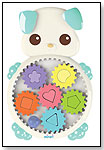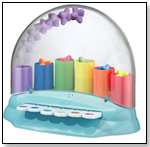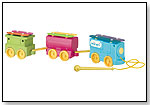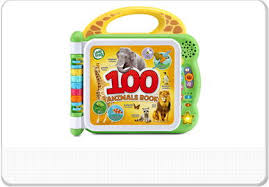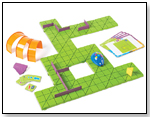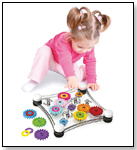|
|
Q&A with Bob Wann, CEO of Patch Products Toy Industry Veteran Bob Wann Shares his Insight and Experience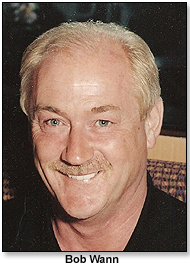 The toy industry is a dynamic place, and no one is more familiar with its ever-changing character than Bob Wann of Patch Products. Mr. Wann has worked for major brands like Hasbro, Fisher Price and Playskool, has worked on evergreen products including Monopoly, Candyland and Scrabble, and even helped introduce now-iconic brands like Strawberry Shortcake and Nerf. The toy industry is a dynamic place, and no one is more familiar with its ever-changing character than Bob Wann of Patch Products. Mr. Wann has worked for major brands like Hasbro, Fisher Price and Playskool, has worked on evergreen products including Monopoly, Candyland and Scrabble, and even helped introduce now-iconic brands like Strawberry Shortcake and Nerf.TDmonthly Magazine was lucky enough to have the opportunity to interview Mr. Wann to learn more about how he rose from an entry level position at M & M Mars to CEO of Patch Products. You can read his fascinating story, and his advice to toy industry newcomers, below. Q. What career path did you originally envision for yourself? Did you ever anticipate working with children’s products? A. I cannot honestly say that I had an original plan to work in children’s products. In fact my first job, working for the IRS as a tax collector, was about as far removed from that as you could imagine! It wasn’t until I worked in sales and marketing in the consumer-packaged goods industry with Johnson & Johnson and M & M Mars that I discovered I enjoyed the excitement and challenge of launching new products every year and seeing how consumers and retailers reacted to these new products that I had played a role in developing or introducing to the marketplace. It was this interim step that ultimately led me to discovering an industry where new products and innovation were the backbone of the business…the Toy Industry! This is what prompted me to enter this great industry, working for Fisher Price in the UK – my first job in the toy industry. As a brand-new, first-time dad, I had just become aware of Fisher Price from first-hand consumer experience. I was very impressed with the high quality and innovation of their toys and the value and equity of the Fisher Price brand. This is what drew me in to the industry, for which I’m forever grateful, as I found the industry that I fell in love with then and am still in love with and a part of 32 years later. No surprise that my love and passion for this industry is what it is today. Not many people have had the opportunity, fun and excitement of working on brands like Hasbro, Fisher Price, Playskool, Monopoly, Clue, Scrabble, Pictionary, Candyland, Yahtzee and Farkle to name just a few, as well as introducing new brands like Strawberry Shortcake, Care Bears, Nerf, Elefun and Bop It. What a fun job! 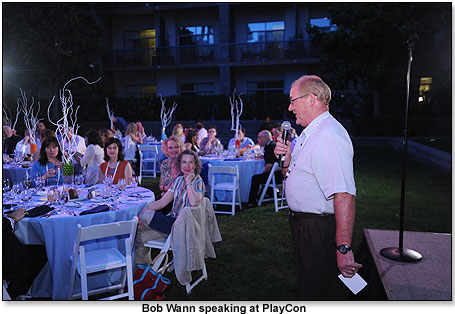 Q. What aspect of the toy industry most surprised you when you first started? A. What surprised me most was at the time (30 years ago) how highly “product driven” the industry was. This was very different than what I had experienced in consumer-packaged goods, which was a very “consumer- and consumer-insight driven” industry. For example, in consumer-packaged goods, new products were conceived and developed AFTER a lot of work was done to understand consumer behaviors and needs, so that these new products would then meet these consumer needs. In the toy industry, it was different: many new toys were born out of someone’s instinct or intuition that it would be a good selling toy. 30 years later the industry has changed, and in my opinion is now doing a better job of using BOTH consumer insight, research and analysis as well as raw creativity and pure instinct to come up with exciting and innovative new toys and games. 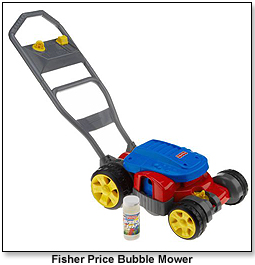 A. I’m not sure I can truly remember my first idea, since it was so long ago. What I can tell you is that any idea I’ve had for a product was inspired by two things: watching and understanding how people play, and then thinking about how to bring a fresh twist to that play pattern so that our product was different and stood out in the marketplace. For instance, one of the first products I was involved with was the Fisher Price Bubble Mower. The idea was generated based on understanding that role-play (imitating mom and dad) has been a classic play pattern for years, and the twist was, knowing that kids loved bubbles, combining the two ideas into a new toy: a bubble blowing toy lawnmower. This later went on to be one of the most successful preschool products of all time. More recently, working with the team at Patch, we created Busy Buddy – one of the toys in our Mirari line. We knew that playing with interlocking gears was another classic play pattern that kids loved. This time the “twist” was to give it character and personality so that it “came to life” and was more entertaining and engaging for the child. We did this by creating a “Busy Buddy” puppy character so that when you turn the gears in his tummy, his ears wiggle and his eyes open and close – classic play with a fun twist! 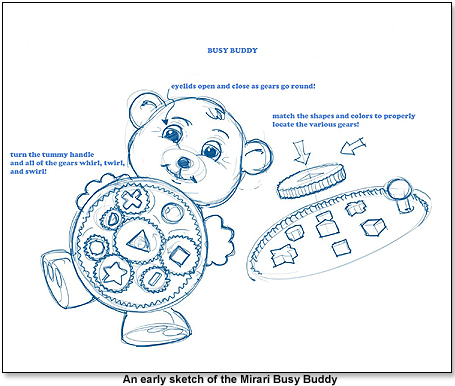 Q. What steps did you need to take to go from the original spark of an idea to actual production? How long did it take? 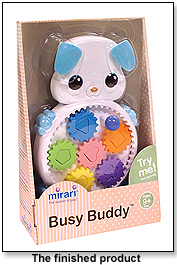 From initial idea to actual production was about six months. It was an idea that really that evolved quickly and just got better and better as we worked on it and fine-tuned it. The finished product looks great and kids love it! Q. What can you tell us about the new Mirari line? A. The Mirari line was born out of consumer feedback where consumers had been telling us toys didn’t have to have electronics; in fact, a number of consumers were asking, “where are the good old traditional toys that are based on play patterns that kids have enjoyed for decades? Why does everything have to have electronic bells and whistles?” We felt the same way at Patch and realized there was an opportunity to create products based on fundamentally time-proven play patterns where the “magic” was in the “kid power” not the “electronic power.” We already had great games and great educational products through our Lauri line. Now we have an exciting new line of preschool toys through the Mirari line. Patch Products is really excited to launch this Mirari preschool line because it is the answer to those parents seeking back-to-basics, classic play. We’re also now broadening our line offering to both retailers and consumers to include great preschool toys as well as our great Patch games for Kids, Family and Adults, and our Lauri educational and developmental toys. Q. How do you hope your products will affect children's lives? A. We really believe in the “power of play” at Patch, i.e. that play is important and affects all of our lives and that you are never too young or too old to enjoy the benefits of play. One of my favorite quotes on “play” that sums it up well is from Plato, who said “You can discover more about a person in an hour of play than in a year of observation.” So at Patch we hope to enrich people’s lives through the engagement, enjoyment and power of play. It’s as simple as that. Q. What do you consider to be your greatest accomplishment in the toy industry? Why? A. I learned a long time ago that teamwork is more important than any one individual. So I have tried hard over my career to provide strong and enthusiastic leadership and vision to my teams to help them unleash and capitalize on their own varied and diverse talents. 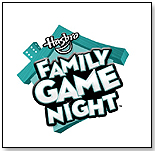 More recently, at Patch, I am proud of what we have done to evolve the company from a predominantly board game only company into a multi-segmented game and toy company. We have great board games like the Game of the Year-nominated 5 Second Rule, but no, we’re not just board games. We’ve also begun to offer “toyetic” games like Don’t Rock the Boat – another Game of the Year-nominated game, which is a skill and action balancing game for kids. And as mentioned above we have branched yet further out with the addition of our Mirari preschool toy line. And, of course, another dimension of our offerings is our educational and developmental games from our Lauri line, such as our Tall-Stacker Pegs and our Locktagons. 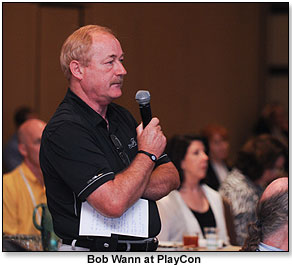 Q. Where do you think the industry is headed? A. I think there’s a lot of concern that the toy industry is under attack and will not do well in the next few years. However, I believe – and we believe at Patch – that if you develop and market great products, there is plenty of opportunity for growth and success. LEGO is a great example of a brand staying current and continuing to find a place among consumers. Their success is based upon LEGO’s fundamental understanding of consumer play patterns, which they’ve leveraged with new and different products that include the power of licensed characters that add fantasy play to basic construction play as well as broadening their consumer demographic with their new LEGO Friends line targeted to girls. A great example of how great products can still drive substantial growth. 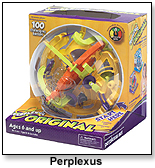 Q. What were the top two or three most significant obstacles you had to overcome to achieve success and how did you do it? A. Growing up in Scotland in a low-income family we could not afford for me to go to college and get a college degree. So I started to work right after high school and found that, at the time, without a college degree it was very difficult getting the kind of job I really wanted with highly respected brand name companies. I eventually overcame this by getting an entry level job at one of those companies (M & M Mars) and basically by following the advice outlined in #10 below. I was fortunate enough to meet and learn from very smart experienced people in each industry I worked in, and was able to progress and go on to work on all the fun, exciting brands and projects that I have mentioned above. Q. What one piece of advice would you offer to someone just starting out in the toy industry? A. Irrespective of what area – sales, product development, etc. – be inquisitive and diligent. Find people with experience and pick their brains. Observe. Go into stores, watch kids, read, do research. Learn as much as you can. Just be studious. Make an active and consistent effort to gather knowledge. Also don’t be scared to take some risk. Think outside the box. Q. Is there anything else you would like to tell our readers? A. Stay childlike. Keep the child inside of you alive. It is not only fun, but it will also help you be more successful in this industry. Take a look at some of Patch Products' recent toys below!
Flying Kung Fu Frogs™ by PATCH PRODUCTS INC.
Planet Sock Monkey™ by PATCH PRODUCTS INC.  Writer's Bio: Justina Huddleston graduated Magna Cum Laude from Emerson College with a BA in Writing, Literature, and Publishing in 2009. After graduating she was the on-site director of the Boston Children's Museum gift store for a year, selling educational, developmental, and creative activity toys that tied in with the museum's exhibits. Justina also interned at children's book publisher Candlewick Press before moving from Boston to Los Angeles, where she is now Editorial Director of TDmonthly Magazine. Read more articles by this author Writer's Bio: Justina Huddleston graduated Magna Cum Laude from Emerson College with a BA in Writing, Literature, and Publishing in 2009. After graduating she was the on-site director of the Boston Children's Museum gift store for a year, selling educational, developmental, and creative activity toys that tied in with the museum's exhibits. Justina also interned at children's book publisher Candlewick Press before moving from Boston to Los Angeles, where she is now Editorial Director of TDmonthly Magazine. Read more articles by this author |
| |||||||||||||||||||||||||||||||||||||||||||||||||||||
Disclaimer Privacy Policy Career Opportunities
Use of this site constitutes acceptance of our Terms of Use.
© Copyright 2025 PlayZak®, a division of ToyDirectory.com®, Inc.

